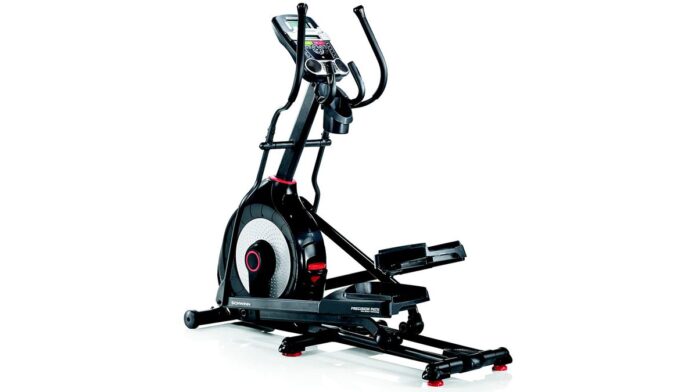Introduction to Ellipse Fit
Ellipse fit is a fundamental concept in the field of data analysis and computer vision, referring to the process of fitting an ellipse to a set of data points. This technique is widely used in various applications such as image processing, pattern recognition, and geometric modeling. By understanding the principles and methodologies behind ellipse, one can effectively analyze and interpret complex data structures.
The Mathematical Foundation of Ellipse
Definition of an Ellipse
An ellipse is a geometric shape characterized by its two focal points. Any point on the ellipse has a constant sum of distances to these focal points.
(x−h)2a2+(y−k)2b2=1\frac{(x-h)^2}{a^2} + \frac{(y-k)^2}{b^2} = 1a2(x−h)2+b2(y−k)2=1
where (h,k)(h, k)(h,k) is the center of the ellipse, and aaa and B are the lengths of the semi-major and semi-minor axes, respectively.
Fitting an Ellipse to Data Points
it involves determining the parameters of an ellipse that best represent a given set of data points. The process typically involves minimizing the algebraic distance or the geometric distance between the data points and the ellipse.
Methods for Ellipse Fit
Least Squares Method
The least squares method is one of the most commonly used techniques for it. It minimizes the sum of the squares of the differences between the observed values and the values predicted by the model. For ellipse, this method involves solving a set of linear equations to find the best-fit parameters.
- Algebraic Fit: This method minimizes the algebraic distance, which is simpler and computationally efficient. However, it might not always provide the most accurate fit in terms of the geometric shape of the ellipse.
- Geometric Fit: This method minimizes the geometric distance, leading to a more accurate representation of the ellipse. It is computationally more intensive but yields better results in applications requiring high precision.
Direct Least Squares Fitting
Direct least squares fitting is an optimized approach for ellipse. It involves reformulating the problem into a constrained optimization task, ensuring that the fitted ellipse adheres to the geometric properties. This method is particularly effective for ensuring that the resulting ellipse is always a true ellipse, not a degenerate conic section.
Applications of Ellipse Fit
Image Processing
In image processing, ellipse is widely used for object detection and shape analysis. For example, in medical imaging, fitting ellipses to anatomical structures can help in the diagnosis and study of various conditions.
- Object Detection: it helps in detecting and recognizing elliptical objects within an image. This is particularly useful in automated surveillance and quality control systems.
- Shape Analysis: Analyzing the shape of objects by fitting ellipses allows for the extraction of meaningful features, aiding in tasks such as pattern recognition and classification.
Pattern Recognition
it plays a crucial role in pattern recognition, where it helps in identifying and based on their geometric shapes. This technique is employed in various fields, including biometrics, industrial inspection, and robotics.
- Biometrics: In biometric systems, an ellipse is used to identify and analyze features such as the iris and the facial contour, enhancing.
- Industrial Inspection: Automated inspection systems utilize ellipse to detect and analyze defects in manufactured products, ensuring quality and consistency in production lines.
Challenges in Ellipse Fit
Noise and Outliers
One of the main challenges in ellipse is dealing with noise and outliers in the data. These can significantly affect the accuracy of the fitted ellipse, leading to erroneous interpretations.
- Robust Fitting Methods: To address this, robust fitting methods such as RANSAC (Random Sample Consensus) can be used. These methods are designed to minimize the impact of outliers and provide a more accurate fit.
- Preprocessing Techniques: Preprocessing techniques such can also help in reducing noise and improving the quality of the data before applying ellipse fit.
Computational Complexity
Another challenge is the computational complexity involved in ellipse, dealing with large datasets or real-time applications.
- Optimization Algorithms: Using efficient and parallel processing techniques can help in reducing the computational burden and improving the speed of ellipse .
- Approximation Methods: Approximation methods that simplify the fitting process without significantly compromising accuracy can also be employed for faster computations.
Advanced Techniques in Ellipse Fit
Elliptical Fourier Descriptors
Elliptical Fourier descriptors (EFDs) are advanced tools used in ellipse fit to represent complex shapes. EFDs decompose a shape into a series of ellipses, capturing both the geometric and topological properties.
- Shape Representation: EFDs provide a compact and efficient representation of shapes, making them useful in various applications such as shape matching and retrieval.
- Feature Extraction: By analyzing the coefficients of the Fourier series, important features of the shape can be extracted, aiding in tasks such as classification and recognition.
Machine Learning Approaches
Machine learning techniques are increasingly being used to enhance ellipses. These approaches leverage large datasets and advanced algorithms to improve the accuracy and robustness of ellipse fitting.
- Supervised Learning: In supervised learning, labeled data is used to train models that can accurately fit ellipses to new data points. Techniques such as neural networks and support vector machines are commonly employed.
- Unsupervised Learning: Unsupervised learning techniques, such as clustering and dimensionality reduction, can also be used to identify and fit ellipses to patterns in data without prior labeling.
Practical Considerations for Ellipse Fit
Choosing the Right Method
The choice of ellipse fit method depends on the specific requirements of the application. Factors such as accuracy, computational efficiency, and robustness to noise must be considered.
- Application-Specific Requirements: For applications requiring high precision, geometric fit methods are preferable. In contrast, for applications where speed is crucial, algebraic fit methods might be more suitable.
- Data Quality: The quality of the data also influences the choice of method. Robust fitting techniques are essential when dealing with noisy or incomplete data.
Implementation and Tools
Various tools and libraries are available for implementing ellipse. These range from general-purpose programming languages to specialized software packages.
- Programming Languages: Languages such as Python, MATLAB, and R provide extensive libraries and functions for ellipse fit, making it easier to implement and customize the fitting process.
- Software Packages: Specialized software packages such as OpenCV and scikit-image offer ready-to-use functions for ellipse fit, simplifying the integration into larger systems and applications.
Conclusion
Ellipse fit is a powerful and versatile technique with numerous applications in data analysis, computer vision, and pattern recognition. By understanding the mathematical foundations, methods, and practical considerations, one can effectively utilize ellipse fit to analyze and interpret complex data. Advances in robust fitting methods and machine learning approaches continue to enhance the accuracy and efficiency of ellipse fit, making it an essential tool in various scientific and industrial fields.

Future Directions in Ellipse
Integration with AI and Deep Learning
The integration of ellipse with AI and deep learning is an exciting area of research. By combining the geometric insights from ellipse fitting with the predictive power of AI, new and more powerful applications can be developed.
- Enhanced Object Detection: AI algorithms can be trained to improve the accuracy of ellipse fit in object detection, even in challenging conditions such as low light or occlusion.
- Automated Quality Control: Deep learning models can leverage ellipse fit to automate quality control processes, identifying defects with higher precision and speed.
Real-Time Ellipse Fit
Developing real-time ellipse algorithms is crucial for applications such as autonomous vehicles and robotic systems. These systems require fast and accurate shape detection and analysis to operate effectively in dynamic environments.
- Optimization Techniques: Research into optimization techniques and hardware acceleration can help achieve real-time performance, enabling the deployment of ellipse in time-sensitive applications.
- Adaptive Algorithms: Adaptive algorithms that can dynamically adjust to changes in the environment or data quality will be essential for maintaining accuracy and reliability in real-time applications.
By exploring these future directions and continuing to refine existing methods, the field of ellipse fit will continue to evolve, offering new capabilities and applications across a wide range of disciplines.


